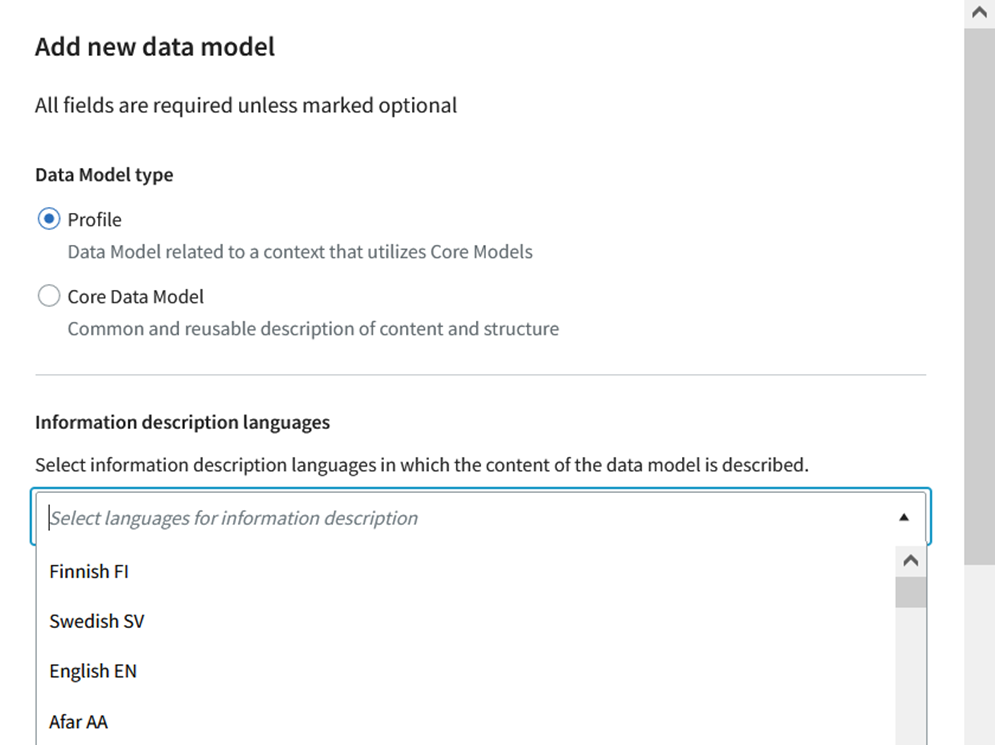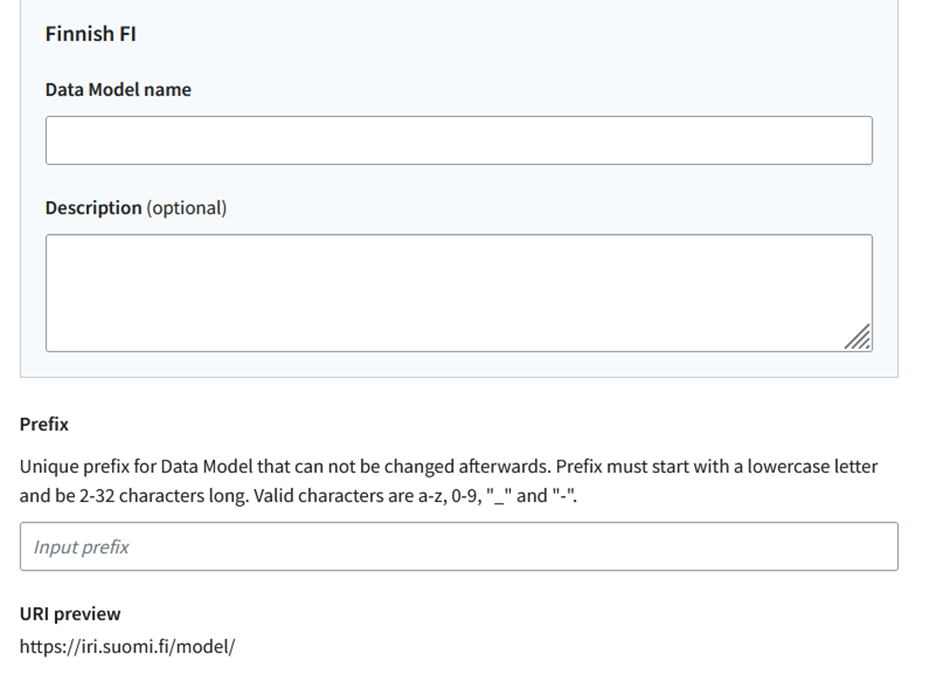If you want to add a new data model, first log in to the tool.
...
If you do not know which type of data model you should be creating, see the modelling instructions: Quick Guide to Semantic Modelling.
Field | Description |
Data Model type | Choose if you are adding a new application profile or a data vocabulary. More information about the differences between the two types can be found from Quick Guide to Semantic Modelling. Note! The chosen data model type cannot be changed later. |
Languages of the data model | Languages used to describe the information in the data model
|
Name of the data model | The field is only shown after the languages for the information content has been chosen. Every language has its own name field. The name is shown in the lists and the search results.
|
Description (optional) | The field is only shown after the languages for the information content has been chosen. Every language has its own name field. Assign a short verbal description of the content of the data model and its intended use.
|
Prefix (identifier) | A string of characters that is used for identifying the data model in the Data Vocabularies Tool. Note! The prefix cannot be changed later!
|
IRI preview | A function to visualise how the chosen prefix is shown as part of an IRI-address. For example: https://iri.suomi.fi/model/xyz123/. |
...


